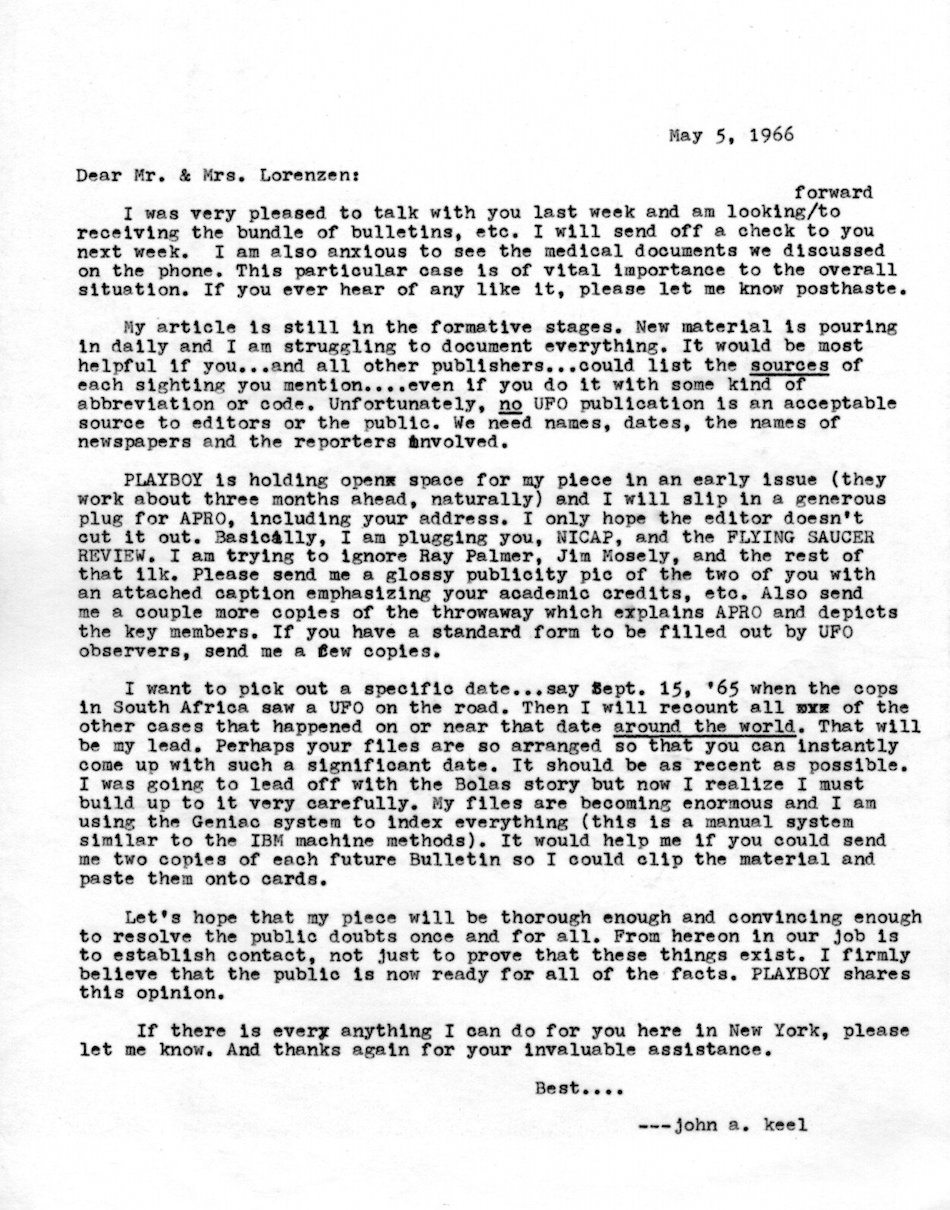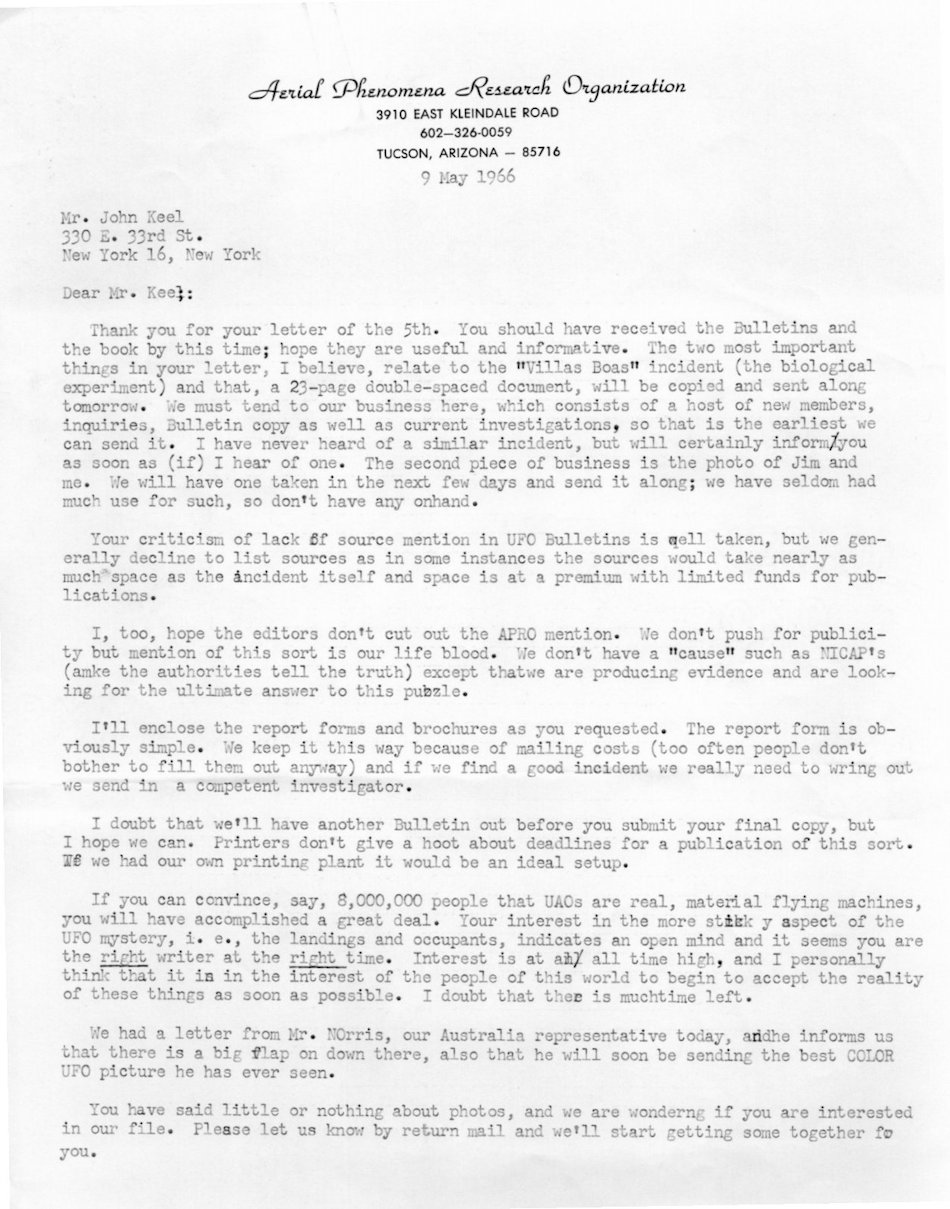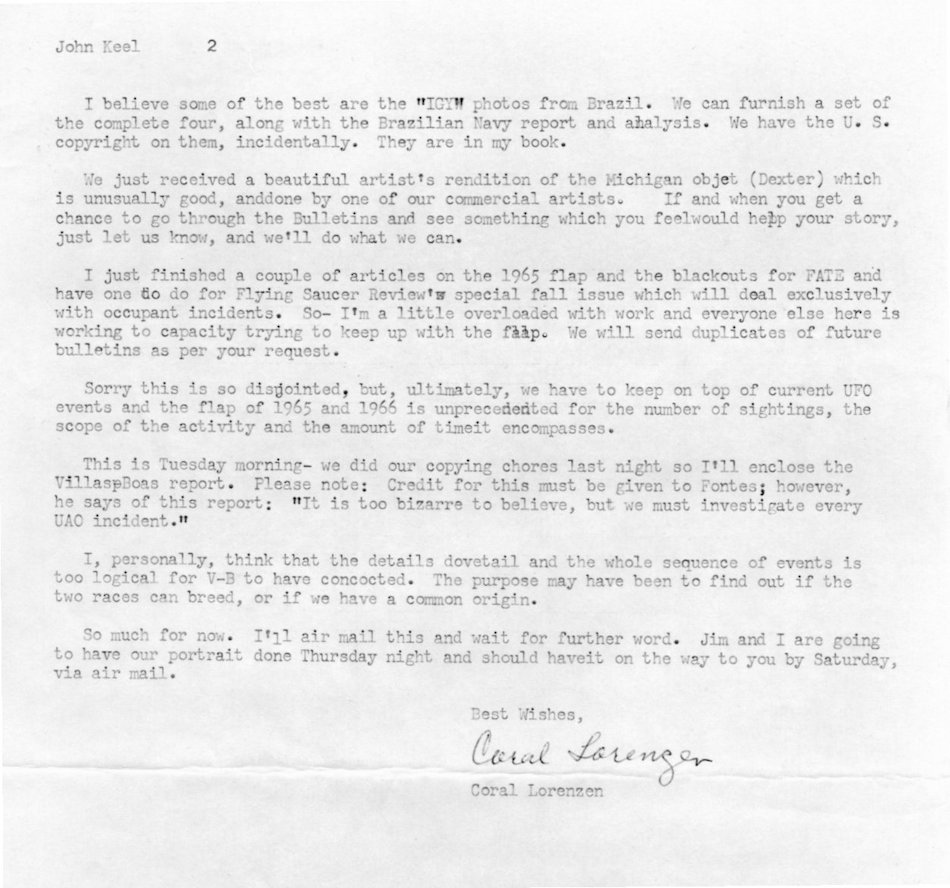John continues his correspondence with Jim and Coral Lorenzen; Carol seems to be the one writing the letters. John stresses the need for sources, asks for a photo of the Lorenzens, an explanatory brochure, and a UFO witness form. He plans to list all the sightings for one date, and to stress APRO, NICAP, and The Flying Saucer Review, and to ignore Ray Palmer (who published Flying Saucers) and Jim Moseley (of Saucer News). The “Bolas story” refers to Antônio Villas Boas, who reported a sexual encounter with an alien. I’m puzzled by John’s use of “the Geniac system.” The only Geniac I could find was a computer toy from the ’50s. Does anyone know of a “manual system” by that name?
Coral Lorenzen replies, promising to send material on Villas Boas, and to take a picture of herself and Jim. She defends not citing sources in the bulletins, mentions a report from Peter Norris on a flap in Australia, and recommends the “IGY” photos: UFO photos taken by Almirs Barauna in Trindade, Brazil, in January, 1958, during the International Geophysical Year. She also adds, rather ominously, “it is in the interest of the people of this world to begin to accept the reality of these things as soon as possible. I doubt there is much time left.”



The only “manual system similar to the IBM punch card system” that I know of was the McBee Cardsort System (and similar products). As the name implies the McBee system used a deck of cards, which were available in multiple sizes. Around the edge of the cards were a series of small holes, and the center of the card was left blank for data, or was pre-printed with spaces for specific data (date, location, etc). Each card represented one record, a ufo sighting for example. Data was coded by notching a specific hole so that an opening to the edge of the card was created. A specific hole might represent August for example.
To search the database for ufo sightings in August, the deck was aligned (one corner was cut at an angle, just like Hollerith or IBM punch cards, to facilitate this). A needle, basically a knitting needle with a handle, was pushed through the “August” hole and all the sightings coded August would fall out, and the rest would stay impaled on the needle. The subset of August sightings could then be searched for West Virginia, assuming that state was assigned a hole, and the result would be August sightings in West Virginia. This is, in fact, exactly how the IBM sorting machine worked.
It was a widely used system by libraries and data repositories for indexing documents. Lots of clever hacks were invented to allow, for example, coding more data than there were holes. I used it myself at the beginning of my career (back in the Pleistocene) and while it was awkward and labor intensive it was the best thing available if you couldn’t afford a punch card system and before personal computers came along.
An interesting article on this obsolete technology was just posted in the Hackaday blog at https://hackaday.com/2019/06/18/before-computers-notched-card-databases/ .
Comment by Ozinor — August 28, 2019 @ 9:48 am
Thanks, Ozinor! That sounds right. Geniac must have been a similar system, but I can find no mention of it online.
Comment by Doug — August 28, 2019 @ 11:15 am
[…] figures as an “anti-Contactee” in the Blomqvist story, and takes center stage in Correspondence with Coral Lorenzen, May 5 & 9, 1966. The remarkably heady days of the 1966 UFO flap shine through these two letters–an […]
Pingback by K. Gosta Rehn and George Adamski – Hakan Blomqvist's Blog | InnerCirclePress.com — September 6, 2019 @ 9:49 am